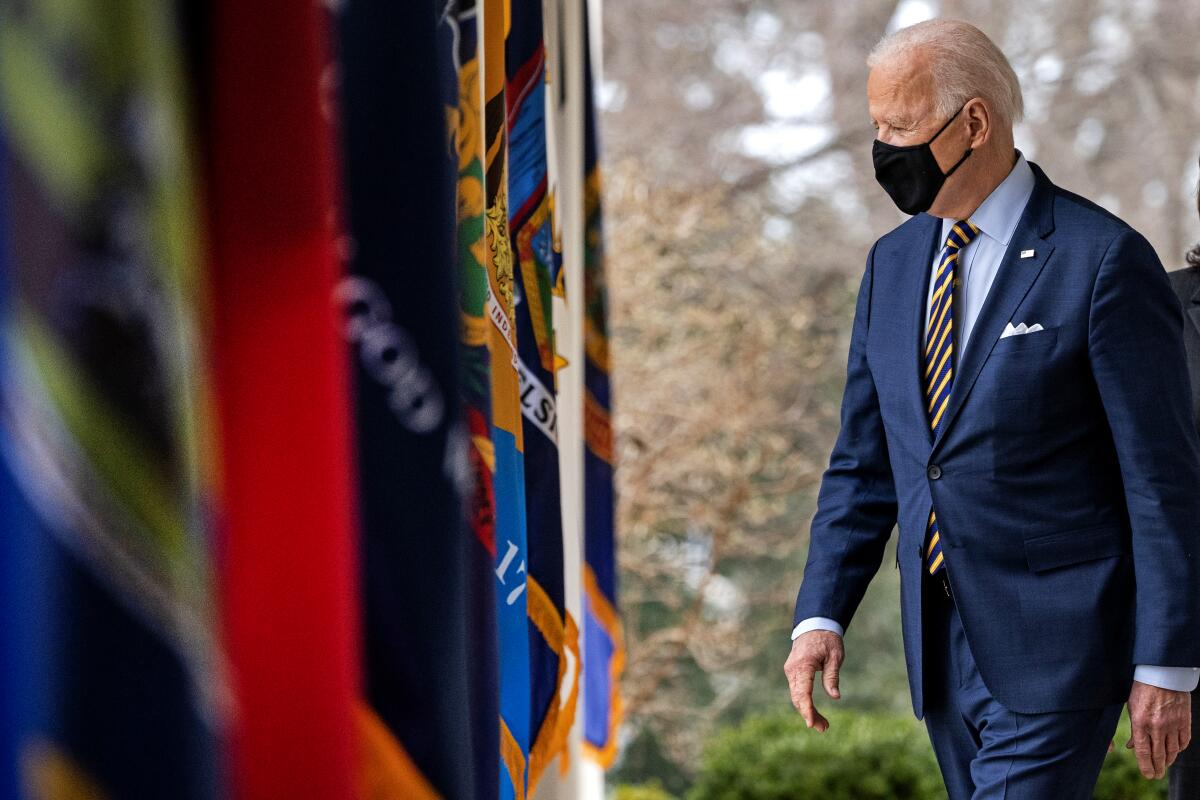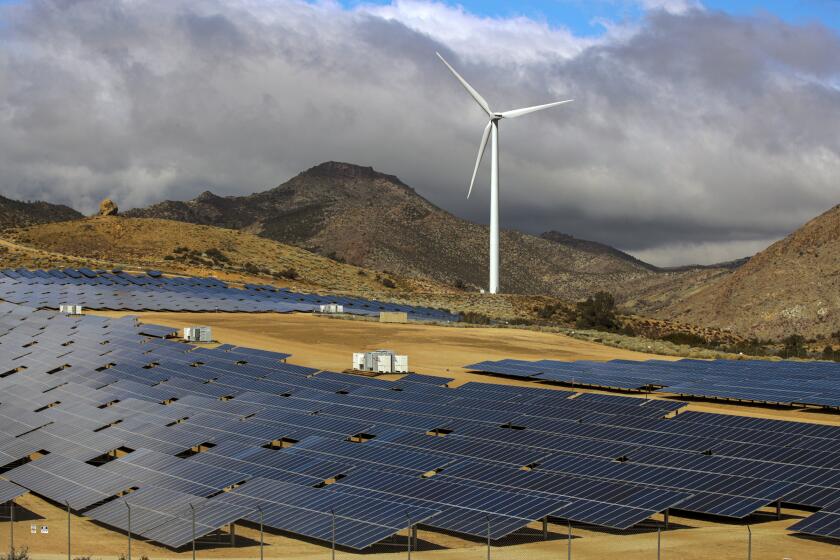Biden’s broadband plan is bold. But the economic payoff is unclear

- Share via
President Biden is betting $100 billion he can deliver a lifeline to rural America, and a boost to the economy overall, by making high-speed internet available to all Americans.
It seems obvious the plan would help millions, especially in agrarian states where the Democratic Party’s support is weakest. Estimating the precise effect, however, is virtually impossible because no one really knows how many Americans lack access to a service that’s considered vital to modern living.
“We have a better map of the Milky Way galaxy than we do of who is un- and under-connected in rural America,” University of Virginia professor Christopher Ali told the Senate Commerce Committee during a March hearing.
According to data from Microsoft, about 157 million Americans don’t use internet access at broadband speeds, many of them in rural areas.
California must ratchet up its ambitions dramatically, leading scientists say.
The Federal Communications Commission has set out to fix that, forming a task force charged with developing new, more accurate maps of broadband coverage, but the effort may not be complete until next year. In the meantime, broadband advocates are hoping all $100 billion remains in a broad infrastructure package the administration hopes to pass through Congress later this year. Republicans offered $65 billion for broadband in their infrastructure counterproposal Thursday.
“As a nation we have to think hard about this,” said Roberto Gallardo, director of Purdue University’s Center for Regional Development. “Are we going to let the coasts pull away and just leave the flyover country behind?”
If lawmakers need an example of how high-speed internet service can help a local community, they might look to little Jackson County in eastern Kentucky. Its population of 13,000 is spread over rugged terrain near the Daniel Boone National Forest.
Peoples Rural Telephone Cooperative, a local nonprofit utility, decided to build an all-fiber network beginning in 2008. About 90% of its $50-million investment was financed through federal loans and grants. Now, lightning-fast service reaches nearly every home and business in the county, a feat that’s garnered national attention.
From 2014, the year the project was completed, through 2019, just before the COVID-19 pandemic hit, unemployment in Jackson County dropped by 5 percentage points, more than in any other county in the state and more than twice the state average, according to data from the state government’s Kentucky Center for Statistics.
It’s hard to determine exactly how much of the improvement stems from the rollout of fiber-optic connections, and Jackson County is still poor, with a median income about half the U.S. average. But Betty Hays, an operations manager at Teleworks USA, an employment clearinghouse serving 23 counties across eastern Kentucky, insists it’s made a big difference.
“It’s been life-changing, lifesaving,” she said. “We place people in legitimate, honest-to-God, put-money-in-your-bank-account, remote opportunities.”
The group matches workers to remotely connected jobs with employers such as Amazon.com Inc. and Hilton Worldwide Holdings Inc. Examples include tech support, customer service, and handling health insurance queries. Average pay is $13 an hour, with some as high as $20, in an area where most private-sector jobs pay the federal minimum of $7.25.
Those jobs don’t come without a reliable, fast connection. So, Hays said, the people of Jackson County have a distinct advantage. Many in nearby counties who rely on private providers pay more for much slower service or have no broadband options at all.
A blizzard of academic studies offers evidence that ubiquitous, affordable broadband could deliver significant economic benefits. They point to income growth and lower rates of unemployment in rural areas, higher rural home values and property tax bases, a higher likelihood of new companies locating there, and even higher crop yields.
One of the most comprehensive studies, by economists at Purdue, examined the potential costs and benefits of extending broadband to all of rural Indiana. The authors concluded that revenue from broadband customers wouldn’t cover the system costs, but the total economic return would be as high as $4 for every $1 invested over 25 years.
Yet, economists are blind when asked to estimate the potential overall effect to U.S. economic output of Biden’s broadband plan because they don’t know how many people would gain access if it were implemented.
According to the FCC, fixed terrestrial broadband service was available to 94% of the U.S. population in 2018, and to 78% in rural areas, leaving a total of 20 million Americans unserved.
Data from the FCC indicate 21.3 million Americans don’t have access to broadband — a much smaller figure than the Microsoft data show.
The reality is much worse. The FCC counts everyone in a census block — an area that may be home to hundreds of people over many square miles — as having broadband access if a single provider serves a single structure in that block, greatly exaggerating the FCC numbers.
“The previous mapping favored the incumbent service providers by allowing them to exaggerate their level of deployment,” said Ali of the University of Virginia.
Biden, in a tweet Saturday, said 35% of rural America lacks access to high-speed internet.
On top of that, many who do receive what’s labeled as broadband are stuck with little or no competition among providers, high prices and service speeds that can’t handle modern demands. And that’s all before the pandemic struck and made it even more crucial for tens of millions of workers and schoolchildren to have a robust connection to the outside world.
Broadband advocates and economists also emphasize that to get the most out of the plan, the Biden administration needs to concentrate on more than just building out access.
The biggest hurdle is affordability, said Brian Whitacre, an economics professor at Oklahoma State University. That’s why Biden’s plan needs more in the way of long-term subsidies for low-income users, he said. Congress in December appropriated $3.2 billion to help subsidize internet access, but the funds are expected to run out within months. A long-standing U.S. subsidy of $9.25 monthly, which has been criticized as inadequate, is set to continue.
“It’s not just the availability that makes a difference,” Whitacre said. “It’s the adoption.”
More to Read
Inside the business of entertainment
The Wide Shot brings you news, analysis and insights on everything from streaming wars to production — and what it all means for the future.
You may occasionally receive promotional content from the Los Angeles Times.











